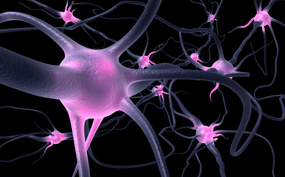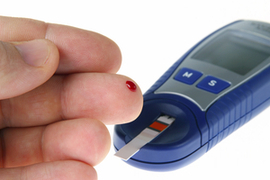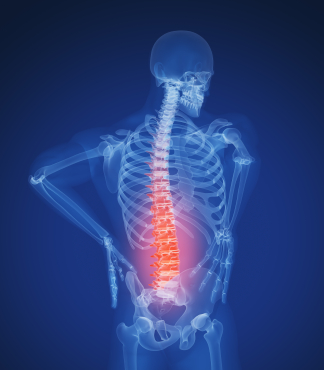Posted by Dr. Jack Sacks on May 24, 2018.
The prevalence of brain injury in the United States is alarming as it is the second leading cause of disability in the country. Often referred to as the silent epidemic, approximately 3.17- 5.3 million Americans suffer from traumatic brain injuries, another 4.7 million have brain injuries from strokes, and another 500,000 have cerebral palsy (brain injury due to an event of oxygen deprivation). Causes of brain injury that may give rise to a medical malpractice lawsuit are further described below:
 Brain Injury from Birth: a medical malpractice lawsuit may arise may when a child’s brain is negligently deprived of oxygen during pregnancy, labor and delivery. This may result in the child later developing cerebral palsy, mental retardation, seizures, blindness, deafness, and learning disabilities. Oxygen deprivation that injures a baby’s brain may arise from any of the following events:
Brain Injury from Birth: a medical malpractice lawsuit may arise may when a child’s brain is negligently deprived of oxygen during pregnancy, labor and delivery. This may result in the child later developing cerebral palsy, mental retardation, seizures, blindness, deafness, and learning disabilities. Oxygen deprivation that injures a baby’s brain may arise from any of the following events:
*Compression of the umbilical cord during delivery
*Maternal Infection present during the pregnancy or delivery
*Placental abruption or uterine rupture prior to birth
*Maternal high blood pressure during the pregnancy (preclampsia)
*Breeched vaginal position of the baby (feet first rather than head first)
*Improper administration or doasage of epidural or labor inducing drugs during the delivery
*Failure to timely perform an emergency c-section
*Fetal macrosomia (oversized baby) unable to navigate the birth canal
Brain Injury in Adults and Children: a medical malpractice lawsuit may arise as a result of errors in diagnosis and treatment of a serious medical condition. A few of the causes of brain injury in children and adults that may involve medical malpractice include:
*Medication errors
*Anesthesia errors
*Surgical errors
*Radiology errors
*Emergency room errors
*Delay in diagnosis/treatment of heart attack or cardiac arrest
*Delay in diagnosis/treatment of a stroke, aneurysm, or blood clot
*Delay in diagnosis/treatment of meningitis or encephalitis
*Delay in diagnosis/treatment of a spreading infection or abscess
*Delay in diagnosis/treatment of internal bleeding
*Delay in diagnosis/treatment of hydrocephalus
*Delay in diagnosis/treatment of diabetes/diabetic coma/insulin shock
In addition to the above mentioned causes of brain injury, many other errors involving patient treatment and care may give rise to a lawsuit. One of the most common causes occurs when a hospital patient or nursing home patient falls (due to inadequate protective measures) and the patient suffers a traumatic brain injury. In fact, falls are the leading cause of traumatic brain injury in our country surpassing even motor vehicle accidents. For a detailed guide to the incidence, prevalence, and epidemiology of brain injury, seeEssential Brain Injury Guide prepared under the auspices of the Brain Injury Association of America.
Topic: Allergic Reactions, Aneurysm, Birth Injury, Brachial Plexus Injury, Brain Injury, Cerebral Palsy, Erb's Palsy, Failure to Diagnose, Falls/Fractures, Heart Attack, High Blood Pressure, Hydrocephalus, Hypogylcemia, Infection, Lumbar Puncture, Meningitis, Paralysis, Peritonitis, Premature Birth, Shoulder Dystocia, Spinal Injury, Spinal Tap, Stroke, Surgical Mistakes Comments Off on Brain Injury and Medical Malpractice
Diabetes affects over 23 million people in the United States and is the 7th leading cause of death. Uncontrolled high levels of blood sugar can cause vascular damage to the retina of the eye, the filtering system of the kidney, and the peripheral nerves. In fact, diabetes is the leading cause of adult blindness, kidney failure, and non-traumatic amputations in the United States. Failure by a health care provider to diagnose, treat, and educate diabetic patients may constitute medical malpractice should a serious injury occur. Preventative measures such as annual dilated pupil exams, annual foot exams, and prescription  medications to control high blood pressure can greatly reduce the risk of injury to the diabetic patient. Outpatient laser treatment to seal off abnormal blood vessels in the retina may significantly delay or prevent the onset of symptomatic diabetic retinopathy and blindness. ACE inhibitors are drugs that can lower blood pressure and prevent damage to the filtering system of the kidney. Effective patient education (by a diabetic educator) about the importance of a maintaining a healthy diet, daily exercise, and proper hygiene are essential to help prevent diabetic complications.
medications to control high blood pressure can greatly reduce the risk of injury to the diabetic patient. Outpatient laser treatment to seal off abnormal blood vessels in the retina may significantly delay or prevent the onset of symptomatic diabetic retinopathy and blindness. ACE inhibitors are drugs that can lower blood pressure and prevent damage to the filtering system of the kidney. Effective patient education (by a diabetic educator) about the importance of a maintaining a healthy diet, daily exercise, and proper hygiene are essential to help prevent diabetic complications.
Diabetes may arise for the first time during pregnancy and cause serious complications. This type of diabetes is referred to as gestational diabetes and can cause the fetus to become oversized and fat due to the excess glucose in the umbilical blood. Unfortunately, an oversized fetus may render a vaginal delivery high risk as birth injuries such as shoulder dystocia are more likely to occur. Failure to diagnose and treat gestational diabetes may result in life threatening complications to the fetus and the mother and may give rise to a medical malpractice claim.
On the flip side, low blood sugar can cause hypoglycemic episodes that may result in brain damage or death. Over administration of insulin, or a failure to monitor low blood sugar levels in diabetic patients may constitute medical malpractice. Reduced blood sugar levels (blood glucose below 65mg/dL) may result in neurogylopenic effects such as impaired judgment, dizziness, slurred speech, seizures, and coma. In a hospital or nursing home setting, glucose fingerstick testing may be necessary every few hours to prevent a serious hypoglycemic episode from arising.
Topic: Diabetes, Hypogylcemia Comments Off on Diabetes and Medical Malpractice: Elevated Blood Glucose or Hypoglycemic Events
Lumbar puncture is a procedure performed in the lower back area, where a needle is inserted between two vertebrae to remove a sample of cerebrospinal fluid (CSF). The patient flexes his/her back to widen the spaces between the vertebrae so it is easier for the physician to access the region. The back is washed with antiseptic soap or iodine and covered with a sterile sheet. A local anesthetic is used to numb the area and then a thin hollow needle is inserted through the spinal membrane and into the spinal canal. During this portion of the procedure, the patient generally feels pressure. The CSF pressure is measured, a small amount of fluid is removed, and the pressure is measured again. The needle is removed and the site is bandaged. The total procedure takes about 45 minutes.

Lumbar puncture is used to collect CSF for analysis to help in diagnosing conditions such as subarachnoid hemorrhage (typically caused by ruptured aneurysm or traumatic brain injury), meningitis (inflammation of the membranes around the brain), and cancers of the brain or spinal cord. Lumbar Puncture may also be utilized to inject anesthetic medications, chemotherapeutic drugs, contrast material, or radioactive substances into CSF.
Lumbar Puncture may be used to identify increased or decreased CSF pressure. Increased CSF pressure can be caused by increased intracranial pressure as is seen with traumatic brain injury, ruptured aneurysm, and sometimes hydrocephalus. On the other hand, decreased CSF pressure can be caused by spinal cord tumor, shock, fainting, or diabetic coma. Normal CSF appears clear and colorless. When an infection is present, the CSF may look cloudy and be yellow or pink in color. Infection may be suspected if there is an increased level of white blood cells and/or protein. Increased CSF glucose indicates hyperglycemia whereas decreased CSF glucose may reflect hypoglycemia, bacterial or fungal infection, tuberculosis, or meningitis. If tumor cells are detected, the patient may have cancer in the brain, spinal cord, or CSF. If there are increased gamma globulin levels, the patient may be suffering from multiple sclerosis, neurosyphilis, or Guillan-Barre syndrome. The analysis of the CSF by the lab and the measuring of CSF pressure recorded from the lumbar puncture help in determining a diagnosis in many serious clinical situations.
Topic: Aneurysm, Brain Injury, Diabetes, Failure to Diagnose, Falls/Fractures, High Blood Pressure, Hydrocephalus, Hypogylcemia, Infection, Lumbar Puncture, Meningitis, Paralysis, Spinal Injury, Spinal Tap, Stroke Comments Off on Lumbar Puncture – Indications and Usage
 Brain Injury from Birth: a medical malpractice lawsuit may arise may when a child’s brain is negligently deprived of oxygen during pregnancy, labor and delivery. This may result in the child later developing cerebral palsy, mental retardation, seizures, blindness, deafness, and learning disabilities. Oxygen deprivation that injures a baby’s brain may arise from any of the following events:
Brain Injury from Birth: a medical malpractice lawsuit may arise may when a child’s brain is negligently deprived of oxygen during pregnancy, labor and delivery. This may result in the child later developing cerebral palsy, mental retardation, seizures, blindness, deafness, and learning disabilities. Oxygen deprivation that injures a baby’s brain may arise from any of the following events:

